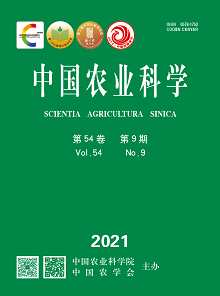【Objective】The objectives of this study were to assess the effects of no-tillage and straw returning on C-cycling enzyme activities in China, so as to provide some insights into organic matter transformation and soil health improvement. 【Method】Based on 56 peer-reviewed papers in China, the database related to soil C-cycling enzyme activities (i.e., invertase, cellulase, β-glucosidase and polyphenol oxidase) under conventional tillage (CT, 507 sets), conventional tillage + straw returning (SR, 305 sets), no-tillage (NT, 291 sets) and no-tillage + straw returning (NTS, 122 sets) were constructed. By using meta-analysis and boosted regression tree (BRT) model, the effects of tillage and residues management practices on the soil C-cycling enzyme activities, and quantified the relative contribution of some variables (i.e., climate, soil properties, planting systems and duration) regulating the invertase activities were analyzed. 【Result】Compared with CT, the overall C-cycling enzyme activities under SR, NT and NTS soils were enhanced by 28.0%, 13.7%, and 23.2%, respectively. Specifically, the invertase activity was increased by 25.3% in SR and 16.2% under NT and 22.5% under NTS relative to CT. In addition, the cellulase activity in SR soil was higher by 36.6% than that in CT soil. In the soils with lower organic carbon concentration (SOC<10 g·kg-1), SR, NT and NTS enhanced invertase activity by 26.7%, 24.2% and 37.9%, respectively. In the soils with higher soil pH (>7.5), the invertase activity was higher by 22.3% under SR and 28.7% under NTS, respectively. Considering the soil texture, the invertase activity in soils with lower clay content (i.e., <20%) was increased by 21.5% under SR and 22.3% under NT. Instead, this invertase activity in soils with moderate clay content (20%-30%) under the SR, NT and NTS was higher by 26.1%, 16.1% and 25.3%, respectively, relative to CT. In the regions with higher aridity index (2-3.5 and >3.5), the enhanced invertase activity was observed in the SR (29.1% and 20.5%), NT (13.4% and 17.0%) and NTS (9.0% and 36.9%) treatments. The application of SR and NTS in the crop rotation systems enhanced invertase activity by 24.0% and 29.7%, respectively, relative to CT, whereas only SR practice in continuous cropping system enhanced the invertase activity by 29.4%. The improved invertase activity by NTS varied with experimental duration showing long-term duration (>10 years; 39.9%) > medium-term duration (5-10 years; 31.7%)>short-term duration (<5 years; 17.6%). Moreover, SR increased invertase activity by 22.0% in short-term duration and 27.3% in medium-term duration. The interaction of no-tillage and straw returning on the invertase activity was limited in the soils with lower SOC concentrations (<10 g·kg-1), higher soil pH (>7.5), lower clay content (<20%), higher aridity index (>3.5), crop rotation system and longer duration (>10 years). The BRT model indicated that clay content and soil pH played the most important roles on the invertase activities in the SR incorporated soils, while SOC concentration and drought index dominated in the no-tillage soils (NT and NTS) in controlling invertase activities. 【Conclusion】The application of no-tillage and straw returning had great significance to enhance invertase activity, especially in soils with lower SOC concentrations, lower clay content and higher drought index.









